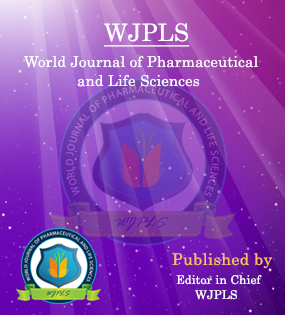Abstract
NECROTIZING FASCIITIS - FLESH EATING BACTERIA SYNDROME
Mehnaaz Alam* and Dr. Jallu Ravindra
ABSTRACT
Necrotizing Fasciitis is also called flesh-eating bacteria syndrome. It is an infection that leads to death of components of body’s soft tissue present below the skin.[7,1] It is a severe sickness of unforeseen onset that spreads apace. Symptoms embrace red or purple skin within the affected space, severe pain, fever, and unconditioned reflex.[7,2] The foremost normally affected areas are the limbs and region. Typically, the infection enters the body through an opening within the skin like a cut or burn.[7,3] Risk factors embrace poor immune perform like from diabetes or cancer, obesity, alcoholism, intravenous drug use, and peripheral artery disease.[7,4] It's not usually unfold between individuals. The sickness is classed into four sorts, reckoning on the infecting organism. Between fifty five and eightieth percent of cases involve over one kind of bacterium Methicillin-resistant staphylococci aureus (MRSA) is concerned in up to a majority of cases. Medical imaging is useful to substantiate the diagnosis.[7,5] Necrotizing fasciitis is also prevented with correct wound care and handwashing. It's typically treated with surgery to get rid of the infected tissue, and intravenous antibiotics typically, a mix of antibiotics is employed, like benzylpenicillin, clindamycin, vancomycin, and gentamicin.[7,6] Delays in surgery are related to a way higher risk of death. Even with high-quality treatment, the chance of death is between twenty five and thirty five percentage.[7,7]
[Full Text Article] [Download Certificate]WJPLS CITATION 
| All | Since 2020 | |
| Citation | 590 | 424 |
| h-index | 12 | 10 |
| i10-index | 17 | 14 |
INDEXING
NEWS & UPDATION
BEST ARTICLE AWARDS
World Journal of Pharmaceutical and life sciences is giving Best Article Award in every Issue for Best Article and Issue Certificate of Appreciation to the Authors to promote research activity of scholar.
Best Article of current issue
Download Article : Click here





